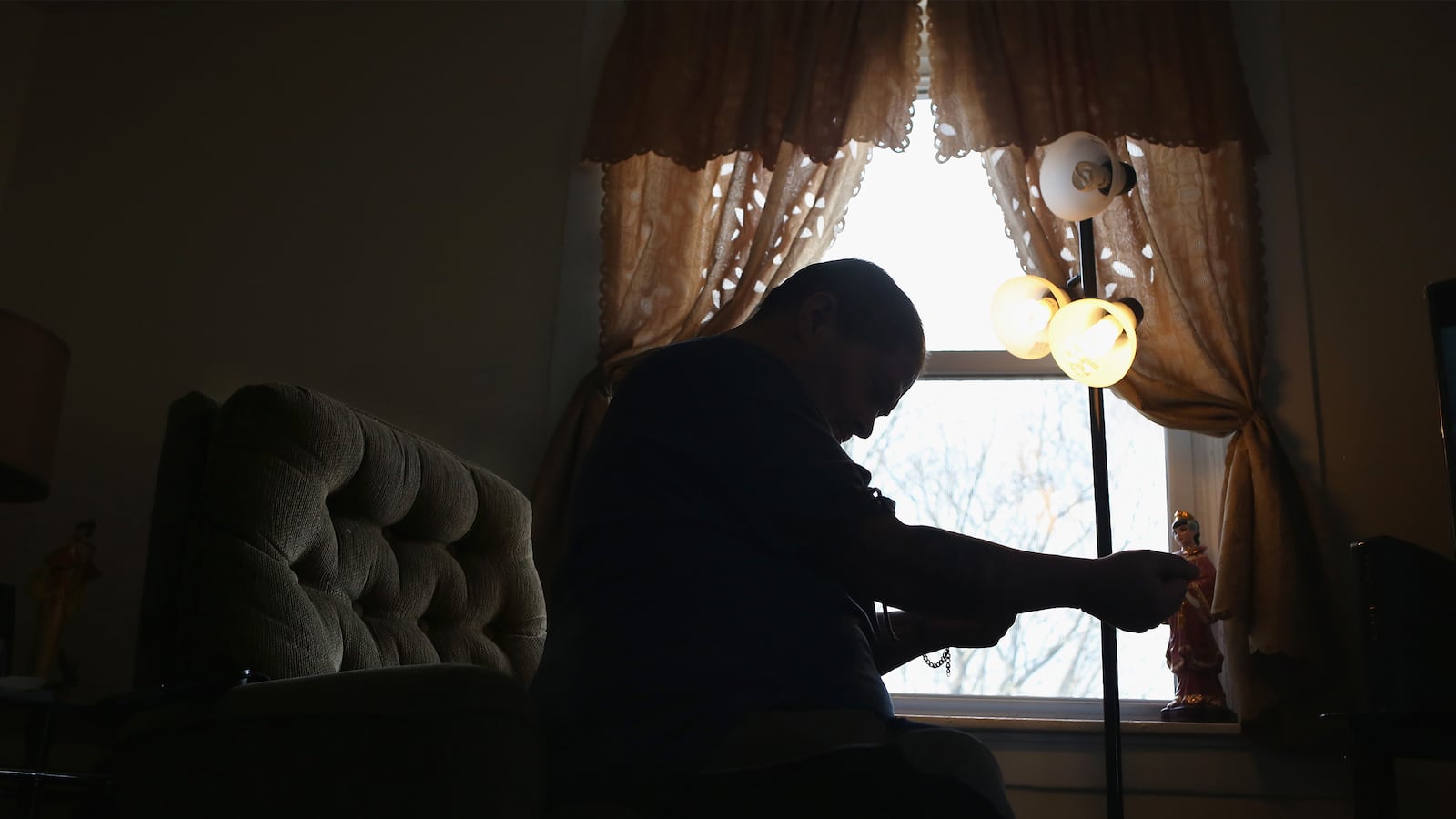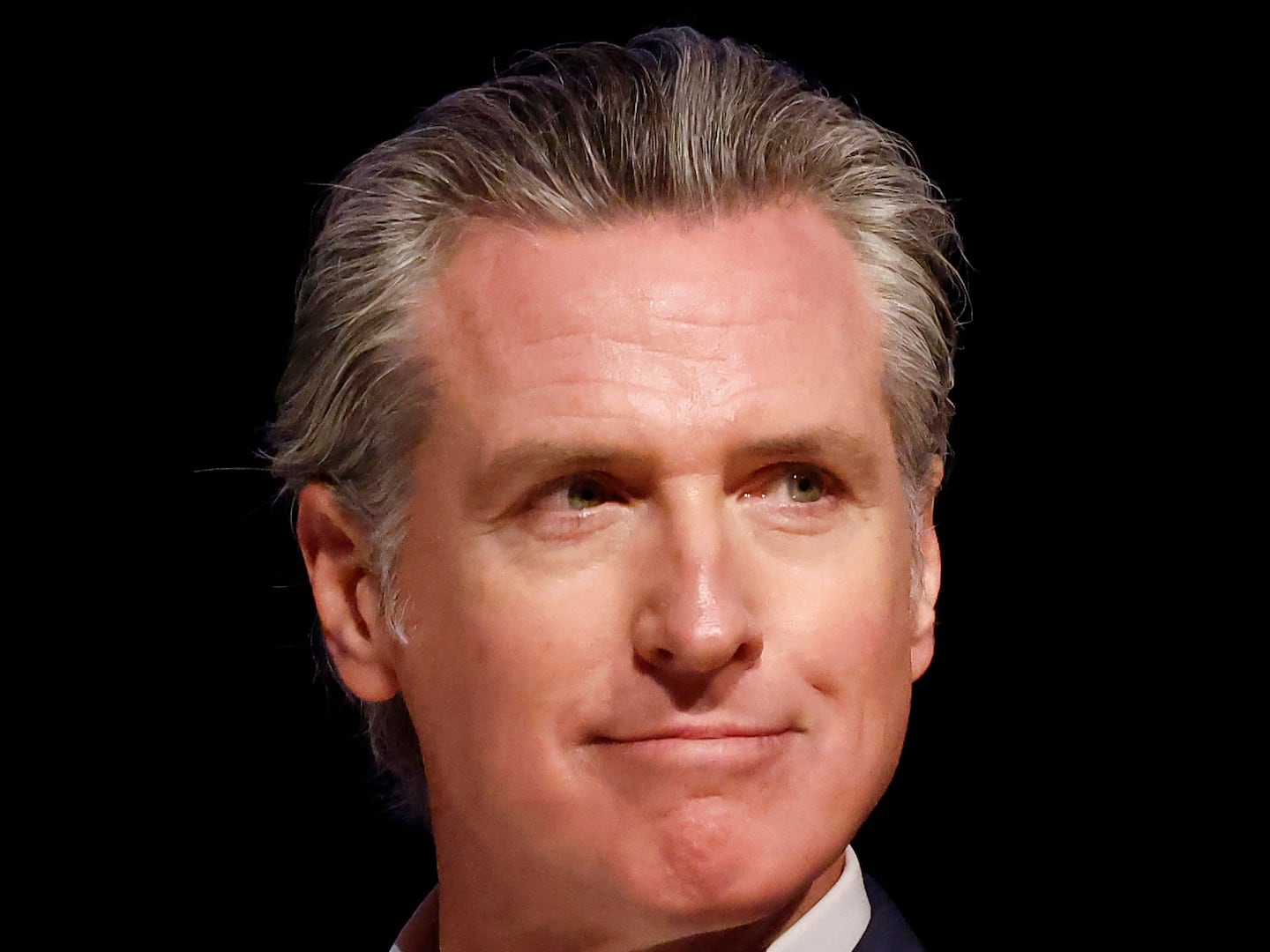Prince wanted the best medical treatment money could buy when he decided to tackle his addiction to opioid painkillers. So he was planning to go to a rehab clinic known for using evidence-based practices—including medication—to treat his painkiller habit, according to local press reports.
The star died too soon for this approach to save him, but it could save millions of Americans. Unfortunately, for years opioid addicts seeking treatment in rehab have largely been denied this same level of care. And that’s led to deadly consequences.
“People who die of overdoses, if you look at their history, they were most likely recently in rehab or jail,” said addiction counselor Dave Malloy, shaking his head in frustration over lunch recently near the drug treatment facility where he works.
Malloy, who is 42, used heroin for years and lost many friends to the drug. He’s been clean since 2004 and is now an administrative supervisor at an outpatient program in North Philadelphia that prescribes the opiate substitute buprenorphine to roughly 50 clients.
Buprenorphine is what’s known as a “partial opioid agonist” meaning it stimulates some of the same brain receptors as drugs like heroin and oxycodone. In proper doses it eliminates craving for opiates. Together with methadone (which has been in use much longer) buprenorphine is one of the two most effective treatments for opioid dependency.
But you wouldn’t know that from how little those two drugs have actually been used to treat opioid dependence.
Unless you’ve been in treatment yourself (as I have) or have a friend or family member who’s been addicted to opiates, you probably have no idea what a mess America has made of treating opioid addiction. The vast majority of addicts who enter treatment programs fail multiple times—not because they are incapable of recovery, but because they’ve been largely denied the therapeutic interventions most likely to produce success.
Public officials in Congress and the Obama administration are now promoting several major initiatives focused on expanding treatment, but taxpayers have already shelled out $1 trillion over the past four decades fighting illicit drug use. The National Institutes for Health estimates that by the end of the decade annual expenditures for drug and alcohol treatment will exceed $42 billion, almost as big as the entire medical diagnostic and laboratories industry.
We can’t afford another failure.
To understand where America went wrong, The Daily Beast spoke with insurers, treatment professionals, and some of the nation’s leading addiction experts. They describe a legacy of treatment in which a small number of effective programs based on scientific principles of opioid dependence have been supplanted by an ideologically driven system that is uninformed by medical best practices and continues to operate largely without any oversight.
“There’s a total lack of accountability, not just from program to program, but even within treatment systems, from counselor to counselor,” said Malloy. “For years, there’s been a blank check, and when the money runs out, guess what? You’re better.”
For the better part of 40 years the recipient of that check has almost exclusively been a drug or alcohol treatment facility based on the 12 Steps of Alcoholics Anonymous—a self help-style system developed by and for alcohol abusers more than 80 years ago, when neuroscience was in its infancy.
Nevertheless these programs have a virtual monopoly on the provision of addiction treatment, so much so that even the most astute observer is unable to distinguish abstinence-only rehab from more effective treatment modalities.
For example, last month in a follow up report on heroin abuse in suburban Ohio, 60 Minutes profiled a single treatment provider called New Beginnings Outreach Ministries without asking a single question about the program’s treatment protocol—which it describes as being “based on faith in Jesus Christ, and [centered] on Christian teachings from the Bible as well as cognitive behavior methods of understanding addiction and recovery.”
It hardly needs mentioning, but that’s not considered an acceptable therapeutic approach for most diseases. It’s little wonder drug treatment fails at such a high rate.
The prevailing treatment system generally claims success rates of 30 percent—a figure many experts view as dubious. But even if we take it at face value, by the industry’s own admission 70 percent of people who go into drug rehab come out no better than they went in. And some cases even worse. One 2015 study found opioid dependent patients receiving only psychological support were twice as likely to suffer a fatal overdose than those being treated with opioid replacement medications.
By contrast, dozens of studies show improved outcomes for opiate addicts who use medication in recovery.
This includes a World Health Organization report that found that when Spain eased laws governing medication-assisted treatment, and began using methadone to treat opiate addiction instead of abstinence-based programs, it experienced a significant reduction in overdose deaths, fewer instances of HIV, and an overall improvement in quality of life for drug users.
Yet three quarters of all opioid dependent patients in the U.S. are still treated without the use of medication, according to data from the Substance Abuse and Mental Health Services Administration (SAMHSA).
In light of their ideological position, abstinence-based treatment programs are reluctant to educate unsuccessful patients about alternatives like medication-assisted treatment.
Instead, the standard 12-steps response to relapse is encapsulated in a deflating motto that is repeated daily in drug rehabs across the country: “Keep coming back, it works if you work it.”
Try to imagine hearing that from a cardiologist.
Thomas McLellan, founder and chairman of the Treatment Research Institute, calls this “unethical.”
“In any other area of medicine, to not mention medication at all, that is a breach of ethics,” he told The Daily Beast during an interview at the organization’s headquarters in Philadelphia. “They’re obligated to act in the patient’s interest and they don’t, always.”
McLellan founded the Treatment Research Institute in 1992 to advance the science of addiction and has become a prominent voice in the field of addiction medicine. In 2009 President Obama named him to serve as his deputy drug czar, a role he held until 2012.
Both McLellan and his colleague at TRI, senior researcher Adam Brooks, acknowledge that residential treatment providers can be an important component of the continuum of care for treating people suffering from addiction. But there are big profits to be made in treating drug addicts; and since rehabs aren’t required to counsel patients on alternative therapies, many of them don’t.
“If you show up at my treatment facility, I don’t care what’s going on with you, you are right for me,” Brooks said.
That’s an important observation, and reflects a problem that has been facilitated to some degree by the disease theory of addiction. This line of thinking, which views addicts as suffering from a distinct and diagnosable chronic illness that can be managed but not cured, has helped remove some of the stigma from addiction. However, it has also led many clinicians to view addiction through a narrow therapeutic lens that treats all substance abusers as essentially the same regardless of their drug of choice.
But all addicts are not the same, any more than all cancer patients are the same. This one-size-fits-all approach to recovery, unique to the field of addiction medicine, has contributed to the high rates of failure in treating opioid addicts.
We know from brain science that people who are addicted to opioids like heroin and OxyContin require a level of care that is distinctly different from someone who abuses cocaine or alcohol.
Until recently, the only recourse for opioid addicts seeking truly effective treatment was one of the roughly 1,400 Opioid Treatment Programs (OTPs) across America that dispense methadone. Those who did manage to find it were forced to either pay for it themselves, or apply for public assistance.
According to a study from the RAND Corporation, while access to medication-assisted treatment is improving, as recently as 2013 five of 37 surveyed states did not extend Medicaid coverage to addicts seeking MAT.
Patients with private insurance have had an even harder time. An insurance industry insider who spoke to The Daily Beast on the condition of anonymity said that most of the plans administered by her company only started covering methadone last year, when the opioid crisis reached a pinnacle.
But even with thinking on medication-assisted treatment evolving she says her company still approves “a ton of medically unnecessary admissions” to inpatient rehabs due to a lack of available medication-assisted treatment providers in its network.
Thankfully this is beginning to change. The Drug Addiction Treatment Act of 2000 made it possible for the first time for opiate addicted individuals to receive medication-assisted treatment outside the clinic system by approving approximately 7,000 doctors to treat up to 100 patients from their office practices using the Schedule III drug buprenorphine (often sold under the brand named Suboxone).
With opioid deaths on the rise, Suboxone, which has a low overdose risk, is quickly becoming a first-line treatment for opiate addiction.
But the dominant 12-Step definition of “recovery” has excluded anyone who uses medication to address their addiction. This has created a trickle-down stigma against MAT that for years has made addicts reluctant to embrace it.
Mark Parrino, president of the American Association for the Treatment of Opioid Dependence, has spent the better part of four decades fighting this stigma. He describes pleading with family members of patients who were being pressured to end methadone treatment, which he describes as “corrective pharmacology.”
“The idea that methadone is not recovery dates back 30 years,” he said. “The concept was you don’t take any kind of medication for your addiction because that was a ‘crutch,’ [but] methadone, when incorporated with a standardized continuum of care that includes counselling is an extremely effective means of stabilizing an opioid-addicted individual.”
An overly restrictive regulatory environment is also to blame for low utilization rates. A scathing 1990 report from the Government Accountability Office forced the federal government to confront the high rates of failure that resulted from its restrictive policies; and in 2001 major changes were enacted that completely reshaped methadone treatment.
Today, federal guidelines are relatively progressive. They call for a range of ancillary services, including counselling, and encourage providers to prescribe methadone in doses high enough to reduce cravings, not just stave off withdrawal. The regulations also allow for patients to receive 30 days of medication to ingest at home after two years of successful treatment.
However, states—and even individual providers—are free to enact stricter guidelines. Two states, Wyoming and North Dakota, don’t have a single methadone provider, and until recently Indiana enforced a ban on new OTPs.
Many programs cap the maximum number of “take home” doses a patient can receive at far below the federally recommended 30-day supply—requiring patients to visit their clinic even on major holidays.
“I watched my daughter open presents on Christmas morning and then had to leave her at home with my mother to get to the clinic and dose,” one methadone patient in Philadelphia said.
Buprenorphine treatment is providing an outlet for the opiate dependent to succeed in recovery without being chained to a clinic. Earlier this year President Obama proposed lifting the cap on the number of patients a single doctor can treat with buprenorphine from 100 to 200. But treatment experts say that some patients still do better on methadone.
Also, unlike OTPs, doctors authorized to prescribe buprenorphine are not bound to standards of care nearly as comprehensive as those required for methadone. That has addiction specialists like McLellan and Parrino worried that people seeking treatment will begin receiving substandard care.
“What’s happening is that as federal authorities say medication-assisted treatment is the thing, we’ve got to save these people from death or other consequences, don’t worry about anything else, just push the medication,” said Parrino. “We think it’s great to use medication-assisted treatment for opiate addiction, but what’s the assisted part? It’s more than just medication. We support balanced, evidence-based standards.”
McLellan agrees, and says he opposes lifting the Suboxone patient cap to 300.
“I’d rather see 30 qualified doctors treating ten patients than one doctor treating 300,” he said. Ideally this would involve getting more doctors qualified to assess and treat opioid abuse in office-based settings using a set of therapies suitable for each individual.
Lawmakers are looking in that direction. The Recovery Enhancement for Addiction Treatment Act, sponsored by Sen. Edward Markey, a Democrat, and Rand Paul, a Republican, would create a new class of “substance abuse treatment specialists” with credentials for treating opiate addiction in an office setting using medication, and it would give nurse practitioners the authority to dispense buprenorphine.
However things play out, it’s a foregone conclusion that the old way of doing business will no longer be standard protocol. Adam Brooks, a senior researcher at the Treatment Research Institute explained.
“At the gate-keeping point these insurance companies are basically saying you’re going to have to meet much higher standards for why somebody should be in your program,” he said. “And honestly that’s a good thing. There are a lot of people who can be treated more effectively and at lower cost in outpatient settings.”
The abstinence-based treatment industry responded early to the push toward evidence-based practices back, convening a special meeting in 2012 to develop a response to what they rightly perceive as a market threat. But by then, the Hazelden Foundation—one of the nation’s oldest abstinence treatment centers—had already caved to science and began integrating buprenorphine into its treatment programs for opioid addiction.
But the vast majority of rehabs still adhere to a drug-free treatment regimen for opiate addiction, or else only incorporate buprenorphine into detox protocols but reject maintenance. Many more halfway and so-called “sober” houses refuse to admit recovering addicts on maintenance drugs.
It remains to be seen if and how these facilities will change their treatment protocols as more payers demand quality care based on evidence-based best practices. An even more compelling question is whether a universal acceptance of opioid addiction as a bona fide medical condition could create ethical, or even legal problems for 12-step facilities that advertise their services as “medically sound” care.
While there is widespread acknowledgement that many clients may not be getting what they pay for in abstinence-based drug treatment, there has been little movement from a consumer protection standpoint. In 2008 the magazine Consumers Digest published an investigative report titled “Dirty Little Secrets” that exposed unethical trade practices in the marketing of inpatient rehab services.
The report surveyed a number of treatment providers and found advertised success rates exceeding 80 percent, far higher than anything found in peer-reviewed literature on addiction.
According to Consumers Digest, at one provider in Arizona:
“[P]atients are charged $28,000 a month for a ‘whole person approach’ treatment that includes a grab-bag of what generally sound like touchy-feely techniques. Patients receive nutritional counseling, life-coaching, neurofeedback and inner-child work, and they spend time in a Native American sweatlodge. But there’s little evidence that any of these practices aid in the treatment of addiction.”
In its promotional materials, that rehab boasted a 70 percent success rate, based on its own patient surveys.
These providers make little effort to qualify variations in success based on what substance is being abused. And for the most part no one has been asking—not even the insurance companies that have been financing multiple stays in veritable failure factories.
Brooks describes a “don’t ask, don’t tell” policy among providers and payers.
“There is really not an alignment of financial incentives to tie quality to what you’re doing,” Brooks said. “Treatment providers don’t want to do it, and payers still don’t necessarily want or need the information. Only recently has there been an effort to find ways to evaluate treatment and it’s limited to small pockets of the market. Usually where the payer notices they are shelling out a lot of money for this one type of care that produces repeated failures.”
Thanks to recent healthcare reforms that is happening more than ever before. Under the Mental Health Parity and Addiction Equity Act of 2008 insurance companies are now required to provide the same level of coverage for substance abuse treatment as they do for other medical conditions. McLellan says this is forcing more accountability including greater attention to treatment outcomes.
The Centers for Medicare & Medicaid Services is trending away from supporting inpatient rehabs as standard protocol for opioid addiction. And the private insurance market isn’t far behind.
A manager in the behavioral health arm of one of the nation’s largest health insurance companies told The Daily Beast that her company is paying closer attention to empirical evidence in deciding what substance abuse treatments they will cover.
“Insurance is actually on the right side of this,” said the manager, who asked not to be identified for fear of repercussions from her employer. “It’s not because we are being altruistic, [it’s because] it hurts our pockets when people get costly treatment that doesn’t work.”
Showing that a particular treatment approach is of value is about more than cost, it also requires positive outcomes. Yet the conversation on recovery has been driven for so long by the 12-step philosophy of total abstinence that the default metric for success in recovery has become how long a person maintains sobriety from all mood-altering substances—regardless of which of those substances were actually problematic—rather than quality of life metrics such as job stability and strong family connections.
Forward-thinking treatment providers are starting to see the problem with that, and are gradually engaging their peers in a conversation about how we should be measuring success in treatment. With more and more middle-class Americans seeking access to treatment, and officials expecting addiction treatment to model other forms of healthcare, pressure will be on providers to ensure treatment outcomes reflect medical goals, not ideological ones.
Updated, 5/9/16, 10:15am to correct an error. The executive order proposed by President Obama will raise the suboxone patient cap to 200 not 300.






